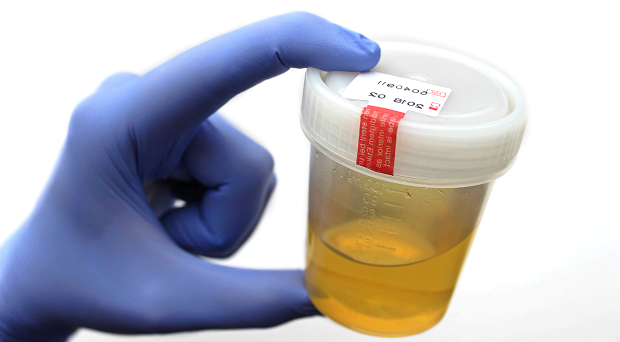Urine Protein:Creatinine Ratio (UPCR)
- Used to confirm proteinuria (dipstick can be inaccurate)
- On random mid-day urine samples, it correlates with the “gold standard” 24-hour urine collection, for quantifying urinary protein loss.
- It is unaffected by urine volume or concentration
- A full urinalysis is ideally done on the same sample to rule out haematuria, inflammation, or a UTI as these can result in proteinuria and make the result invalid
- Dogs on immunosuppressive doses of corticosteroids will have a mildly (up to 1.3) increase in ratio due to mesangial cell proliferation
Interpretation of the UPCR
Renal proteinuria is defined as persistently elevated UP/Cs greater than 0.5 in dogs, & > 0.4 in cats in which pre- and postrenal proteinuria has been ruled out. They may be of glomerular or tubulointerstitial origin. Proteinuria between 0.2 – 2.0 may be tubular or glomerular; proteinuria >2.0 is considered glomerular; the higher the ratio the more likely there is to be primary glomerular disease present.
IRIS (International Renal Interest Society www.iris-kidney.com) recommends that at least 3 urine samples are collected over a period of at least 2 weeks for sub-staging renal disease.
| UP/C value | Substage | |
| Dogs | Cats | |
| <0.2 | <0.2 | Non-proteinuric |
| 0.2-0.5 | 0.2-0.4 | Borderline proteinuric |
| >0.5 | >0.4 | Proteinuric |
Urine Cortisol:Creatinine Ratio (UCCR)
- See Endocrinology chapter – diagnosis of hyperadrenocorticism
- Screening test for canine hyperadrenocorticism as a low (normal) result makes the disease unlikely
- Useful in cases where hyperadrenocorticism is unlikely but needs to be definitely excluded
- Low specificity (many false positives) so further tests are required to confirm that a high result is due to hyperadrenocorticism (i.e., low dose dexamethasone suppression testing +/- ultrasonographic adrenal imaging)
- It is thought that the test has similar sensitivity and specificity in cats but there are few published reports
Interpretation of UCCR in Dogs:
| Normal Value | <10 x 10^-6 |
| Equivocal | 10 – 15 x 10^-6 |
| Increased | > 15 x 10^-6 |
Urine Fractional Excretion Ratio Analyte X (FEx)
- Fractional excretion (FE) of an analyte (FEx), frequently an electrolyte but sometimes a mineral, is determined by both glomerular filtration and tubular reabsorption. It provides an estimate, expressed as a percentage, of the amount of analyte excreted in the urine so indirectly assesses the ability of the renal tubules to reabsorb an analyte.
- Most commonly used to determine if a decrease in Na, Cl, Ca, or PO4 noted on the biochemical profile, is due to excessive renal loss of that substance. FE results should always be interpreted in relation to serum concentration of the analyte
- As these electrolytes and minerals are reabsorbed by tubules, FEx is an indicator of tubular function e.g., K-losing nephropathy in cats. If FEx is normal, then loss is occurring elsewhere
- Calculation is similar to that for UPCR (i.e., a percentage of urinary creatinine excretion). Requires simultaneously collected urine sample and serum sample.
- The formula for FE electrolyte is FE = (urine electrolyte/serum electrolyte) (urine creatinine/serum creatinine) x 100
- Results are influenced not only by renal tubular function, but by age, breed, gender, diet, biological rhythms and exercise and these should always be taken into account when interpreting results
Normal FE of some analytes in dogs and cats:
| Analyte | Dog | Cat |
| Sodium | <1% | <1% |
| Chloride | <1% | 1.3% |
| Potassium | <20% | <24% |
| Phosphorus | <39% | 73% |

